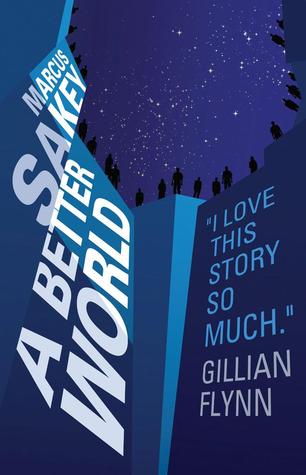With his Brilliance series, suspense writer Marcus Sakey is doing for adult science fiction what Suzanne Collins did for YA science fiction in the Hunger Games books and George R.R. Martin did for epic fantasy with Game of Thrones: He’s making it accessible to people who aren’t fans of those genres.
Actually, I’m hesitant even to tell you that the Brilliance series is science fiction because you may decide not to read it on that basis alone, so try not thinking of it as science fiction. Think of it as a series of suspense novels that will have spectacular special effects when they get made into movies. The words “science fiction” create certain expectations in people’s minds, like starships and latex-faced aliens, and you won’t find any of that in Sakey’s work.
What you will find, as I discussed in my review of the first book in the Brilliance series — appropriately entitled Brilliance — is lean, muscular, intelligent prose with interesting characters and deftly executed plot twists. For those of you tired of the all-too-often bloated prose of fantasy writers like George R.R. Martin and Stephen King (both of them excellent authors who just never got the message that less can sometimes be more), you’ll find Sakey’s tight plotting and no-words-wasted descriptions a refreshing change. And if you’ve read the first book in the Brilliance series, you’ll be thrilled to discover that, after a somewhat slow opening caused mostly by the addition of some new viewpoint characters, A Better World is not only as good a book as the first in the series but actually a better one. The second half of this book is one of the most gripping thrillers I’ve read in recent years and Sakey sets up the third book in the series — yes, this is going to be at least a trilogy — so perfectly that I’m already wishing he’d finish it already and put it on Amazon, because I really don’t want to wait as long for it as I’ve been waiting for new books in George R.R. Martin’s A Song of Ice and Fire series. Fortunately, not only is Sakey a less verbose writer than Martin but a faster one.
In A Better World, the protagonist is once again government agent Nick Cooper, but he’s on leave from his job with the DAR, having developed serious doubts about their mission to keep watch on so-called brilliants, super-intelligent mutants of which Cooper is one. (If you’ve read the first book, you’ll know why Cooper is having doubts.) That doesn’t mean he’s sitting on his hands, though. He’s offered a job as a presidential adviser and he takes it, because he thinks brilliants deserve a voice in the White House. So, fortunately, does the president. Alas, this makes Cooper some powerful enemies, because not everybody who works in the West Wing is exactly who they seem to be, no matter how nice they all seemed during those seven years Martin Sheen spent as the PoTUS.
Cooper also returns to the city of Tesla, high in the Colorado Rockies, a town designed especially for brilliants to live in and therefore seen as a threat to normal humans by certain political advisers who want the president to take executive action of a particularly dangerous kind. As Sakey winds the plot tighter and tighter, the story heads into Tom Clancy political thriller territory, the kind where the fate of nations hangs in balance. Though several of Sakey’s characters are human beings that the reader feels deeply about, the climactic scenes of this novel involve a spectacular situation that I wouldn’t dream of spoiling for you.
I don’t want to go into more details about the plot because you shouldn’t be reading this review. You should be reading the book. You can buy the e-book for $5 from Amazon.com and it’s worth three times that much. Then again, you might want to wait until the third novel is out so that you can binge-read them in sequence, but I don’t have that kind of patience. Once I’d read the first book, I knew I’d read the second one the day it came out — and I did. (It’s taken me a while to review it, though. Life keeps getting in the way.) If you’ve read the first book, you should read this one as soon as you possibly can. You won’t regret it.

